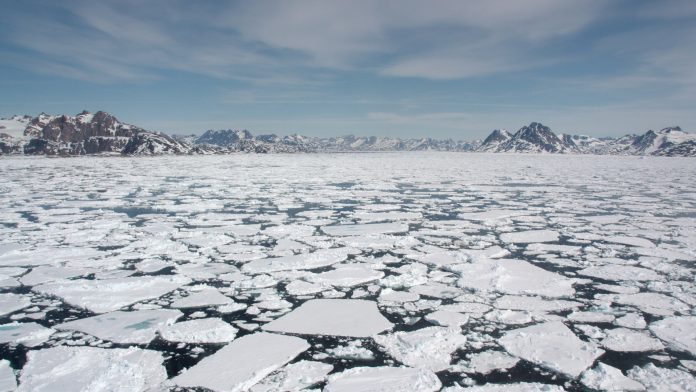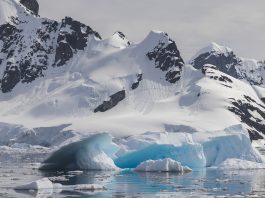New research has discovered that proposals to cover Arctic sea ice with layers of hollow glass microspheres, around the thickness of one human hair, will actually accelerate the loss of sea ice.
It would also warm the climate, rather than creating thick ice and lowering the temperature, as researchers have claimed.
Sea ice is of critical importance to Earth’s climate, as it reflects the majority of the Sun’s energy back to space. It also helps to regulate ocean and air temperatures, and influences ocean circulation.
The new discovery was made by a team of researchers at the University of Alaska Fairbanks’ Geophysical Institute, and was published in the journal Earth’s Future.
Rejecting previous microspheres theories
The research challenges claims from another research paper, published in 2018. This paper claims that repeated spreading of hollow glass microspheres (HGMs), on young Arctic sea ice will increase reflectivity, protect it from the Sun, and therefore allow it to mature over time into highly reflective multi-year ice.
The new proposals reject these claims, as the team discovered that placing layers of white glass microspheres onto sea ice would actually darken its surface. This would accelerate the loss of sea ice and further warm the climate.
According to the 2018 study, the application of five layers of HGMs reflects 43% of the incoming sunlight and allows 47% to pass through the HGM layers to the surface below. The remaining 10% is absorbed by the HGMs. The new research shows that 10% of sunlight retained by the microspheres is enough to hasten the melting of ice and further warm the Arctic atmosphere.
“Our results show that the proposed effort to halt Arctic sea-ice loss has the opposite effect of what is intended, and that is detrimental to Earth’s climate and human society as a whole,” said Melinda Webster, lead author of the study.
How seasonal changes affect the reflectivity of sea ice
The researchers reached this conclusion by calculating changes in solar energy across eight common surface conditions found on Arctic sea ice, each with different reflectivities. They also considered seasonal sunlight, the intensity of solar radiation at the surface and top of the atmosphere, cloud cover, and how the microspheres reacted with sunlight.
The 2018 study did not fully account for the varying surface type reflectivities, or variations that would occur depending on the time of year the HGM was applied. A layer of microspheres can increase the reflectivity of new ice, which is naturally dark. However, the effect is minimal due to thin ice mostly occurring in autumn and winter, when there is little sunlight. Thin ice is easily covered by falling and drifting snow, which increases its surface reflectivity.
In spring, solar energy increases with the return of the polar day. This is when most sea ice is covered by deep, reflective snow. Because snow has high reflectivity, microspheres would darken the snow’s surface. This leads to an increase in its solar absorption, subsequently accelerating its melt, which is the opposite intention of the proposed methods.
Late spring and early summer again impact sea ice differently. Melt ponds begin to form across the ice as solar energy increases. Ponds would seem an ideal target for the use of hollow glass microspheres because they are dark and have low reflectivity, but covering ponds with HGMs would not have the desired effect.
An experiment on a Minnesota pond in the 2018 study showed that wind blowing the buoyant spheres to the pond edge, where they clumped, much like pollen does each year on ponds and puddles.
Why HGMs are not a feasible method for restoring sea ice
March, April, May, and June – the months that seem most favourable for the application of microspheres – are actually the worst months to apply HGMs.
Fully non-absorbing microspheres, meaning they absorb 0% rather than 10% of incoming solar energy, are likely still not a feasible option for restoring sea ice. They are plagued by quantity issues, with huge amounts needed to cover the Arctic sea.
About 360 million tonnes would be needed for an annual one-time application to cool the climate. That is, if non-absorbing HGMs could be manufactured and dispersed without contamination.
“The use of microspheres as a way to restore Arctic sea ice isn’t feasible,” Webster said. “While science should continue to explore ways to mitigate global warming, the best bet is for society to reduce the behaviours that continue to contribute to climate change.”









